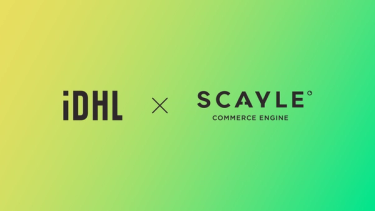Insight13 min read
No personalisation, no conversion
Thu Apr 23 2020 | Marketing Team

- Insight
- Web & eCommerce
- eCommerce
Tags
When you visit your favourite retail store, you’re already familiar with the environment. In some cases, the employees may recognise you and have an idea of what you like. Simply put, they know you well enough to make purchasing easier. This same level of personalisation can be applied to your eCommerce store. In fact, online shoppers expect it.
Customer expectations are at an all-time high. Armed with fast technology and technological minds, people are equipped to research eCommerce sites and online reviews to influence their purchase decisions. 72 percent of consumers say they now only engage with personalised marketing messages while 91 percent of consumers are more likely to buy from brands who remember them and provide relevant offers.
Personalisation makes a customer feel valued, improving their shopping experience and creating a connection with your brand. This translates to loyal customers and higher conversion rates. In this blog, we’ll share our top personalisation strategies for your eCommerce store.
Personalisation in eCommerce
Create buyer personas
When your brand messaging is aimed at everyone, it becomes weakened and your conversions suffer. Understanding your audience and creating buyer personas is a way of moving beyond the one-size-fits all approach. Buyer personas help segment your audience by understanding individual customer needs and motivations. This allows you to deliver tailored messaging and provide relevant communications at different stages of the buying journey.
Personas should be based on data. A combination of web analytics, shopping data, competitor research, surveys and customer service analysis can all feed into building buyer personas. But why should you use them?
People are more likely to remain loyal to brands who show how well they understand them. The shopping experience automatically becomes a more enjoyable one when the consumer feels their needs are aligned with the brand. Delivering this personalised experience helps foster long term loyalty.
Use your customer data
Connect with customers based on their past shopping habits by using data you already have. Using geographic regions, shopping habits, product browsing history, age and average order size among other attributes, you can personalise what customers see on your website.
It’s important be transparent over how their personal data is used to give the assurance of privacy. Many people are willing to share personal information, but they want to see tangible benefits such as discounts and other special offers in return.
Bridging the gap with omnichannel marketing
One way to connect the online and offline experience is by enabling shoppers to apply their personalised experience from one channel to another.
For example, a voucher sent in the post can also be made applicable to spend in store or online. Limiting personalised incentives to online channels will not help your physical presence and vice versa, it also puts a barrier to conversion in place if a person prefers to shop in store.
Another example could be your website homepage. Think of this as the front door to your online store. Once a user lands on your homepage, you already have a potential customer at your door. It’s up to you to make the engagement as relevant and impactful as possible. Thanks to cookies, you can get to know your users better after just one visit. Why not take this information and use it to inform their next? This could include displaying categories they showed an interest in or products to reflect their interests.
Integrating a third-party tool such as world-class search technology, Klevu, helps to deliver this personalised experience by connecting shoppers with the products they are looking for, faster. The solution is continuously learning how shoppers interact with search to optimise results with features including self-learning search, autocomplete and trending searches. Mairaid Harte, Klevu’s Customer Success Manager, provided us with her thoughts on keeping up with shopper expectations:
"“To keep up with online shopper’s expectations today, personalised search needs to be at the core of the shopping experience. Not being able to pick up the user behaviour fast and show the products that the consumers are most likely to buy is a huge opportunity to miss as visitors using search convert at around 3-5 times more. Personalised search helps to increase sales and conversion rates when leads are nurtured with targeted content.”
Mairaid Harte, Klevu’s Customer Success Manager“
Use product recommendations
The digital and physical worlds are becoming more entwined forcing retailers to rethink the customer experience. Marketing automation can support omnichannel growth and engagement by combining and connecting offline and online touchpoints. Forward-thinking retailers are rapidly evolving their marketing and eCommerce stores to take advantage of this shift.
Are your homepage, products pages and checkout tailored for every user? Use these touchpoints to create a tailored offering around their buying habits providing an end-to-end personalised experience from email all the way through to checkout. For example, product recommendations can be bundles into different groups such as:
- Frequently bought together
- Customers who bought this also bought
- Other items you may like
- Recommended for you
The personal touch of these product recommendations is what makes a customer feel valued. Targeted upsell and cross-sell opportunities are an important part of this too. These can be delivered through automation to prompt the purchase of relevant products.
Using Nosto’s eCommerce Intelligence Engine allows you to suggest relevant products to customers throughout their buying journey. These recommendations are relevant and personalised, based on user behaviour such as frequently viewed products or products the customer has previously considered. Rory Gilmore from Nosto highlights the importance of data-driven, real-time personalisation:
"“During a busy peak season, investing in personalisation that is both data-driven and in real-time is key for retailers to strengthen product discovery and maximise performance. With automated personalisation, retailers can deploy a variety of tactics to encourage shoppers to find products onsite: from showcasing recommendations based on attributes like geo-location and browsing history to reinforcement-based recommendations that allow customers to return to previously viewed items. Nosto, in addition to actioning these capabilities, can also automatically detect a gift buyer’s preferences (such as discount, category or brand affinities) and surface relevant content that encourages action.”
Rory Gilmore, Nosto's Head of Customer Experience in the UK“
Nosto analyses the unique browsing behaviour of every visitor to tailor their online experience. By recommending the most relevant products, the user’s journey is much more enjoyable, and the proof is in the pudding with this tool generating an average conversion increase of 15.5 percent.
The importance of cart abandonment
Did you know that nearly 78 percent of shopping carts are abandoned before checkout? That’s a lot of lost opportunities. There could be a range of reasons why a consumer doesn’t complete a purchase such as extra costs, forced account creation and a long checkout process.
It’s important to understand the reason why these people are not checking out in order to make the necessary improvements. A UX audit can help uncover these improvements by understanding what’s working and what isn’t. Combining data with testing and heat maps, it becomes easy to identify what is damaging the user journey.
A quick method of re-engaging some of these lost visitors is sending an abandoned cart email. In fact, these emails can recoup up to 10 percent of missed revenue. Creating an engaging and personalised abandon cart email can encourage people to return and convert. As with any email campaign, you need to consider content, timing and personalisation to make it as effective as possible. This could include a thought-provoking subject line and additional product recommendations in line with their interests. As a shopper, wouldn’t you be tempted by a personalised email reminding you what you considered purchasing and why?
Get personal with your email marketing
One of the most effective channels for eCommerce marketing is email, with over 59 percent of marketers saying email is their biggest source of ROI. Adding personalisation into the mix can help make this channel even more effective. We spoke to email marketing expert, Amy Birch, from our connected agency, Wired Plus to find out more:
- Personalise email subject lines: The beauty of email is that you can deliver messaging to a user directly to their inbox. The downfall is that many businesses are doing this so you’re fighting to get your email noticed. 47 percent of email recipients open an email based on the subject line alone, while emails with a personalised subject line are 26 percent more likely to be opened - highlighting the value of tailoring your message.
- Celebrate milestones: Celebrating milestones such as birthdays and anniversaries is a great way of showing your consumers they’re valued and also helps with re-engagement. Why not add an incentive such as a one-off 10 percent discount too? Within this email, you could also include recommended products to encourage a birthday treat for themselves.
- Send emails based on user behaviour: If you’re already tracking user behaviour on your website, why not use this information to send more targeted emails to prospects? Using URL tracking, you can track the visitor’s actions on your site and then follow up with a tailored email. These targeted emails could be based on what they search for, which items they checkout with or the ones they add to their wish list.
- Resume inactive leads: Personalisation is an effective method for winning back old customers who haven’t converted in a while. Targeting those who haven’t purchased from you or haven’t read your emails in a long time, you can create an email campaign for inactive leads. Make it personal by including recommendations and an incentive to entice them to re-engage.
- Survey your audience: Automating messages such as review requests and feedback that are personal to the product the consumer has purchased helps to improve audience profiling. Use this captured data to present even better-tailored email campaigns to the user.
Omnichannel marketing involves consistent and targeted messaging across all channels, not just your website. Creating detailed automation workflows based on transactional data, demographics and online behaviour is an effective way to target your audience with tailored content. An email marketing automation platform such as Wired Plus helps deliver personalised messaging based on specific touchpoints in the buyer journey.
Basic personalisation won’t stand the test of time
Basic personalisation such as including a user’s name in an email subject line no longer cuts it. If merchants want to deliver relevant, personalised experiences, they need to get to grips with the latest technology advancements such as machine learning and automation. The future of eCommerce personalisation will leverage these solutions to understand where consumers are in their journey and identify different factors to deliver a personalised experience. As such, merchants will be able to consider not just who is interacting with them, but also where, when, why and how.
Effective personalisation should delight shoppers making them feel like your brand truly understands their needs. It’s only becoming more important for retailers to create the kind of personalised experience that customers no longer want but expect. Do you need help delivering personalisation to your customers? Get in touch to speak to our in-house eCommerce Strategists and find out how we can help.


